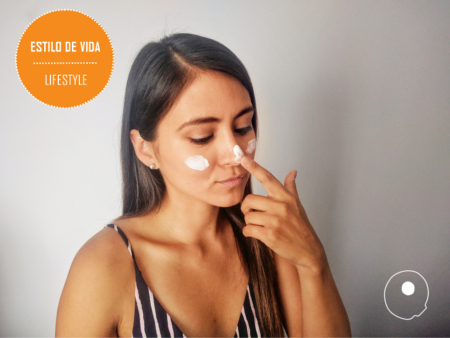Hello! This post is all about sun protection. My experience in Peru can be summed up as hot. It’s summer in Lima and I’m melting away. Only this week Senamhi, Peru’s weather institute measured radiation levels ranging from 14 to 19 on a scale of 20. For reference, a measurement of 5 is moderate, above 11 it is extremely high. Español aquí.
Of course you shouldn’t just protect yourself from the sun and radiation in Peru. Wherever and whenever, you should protect yourself. Did you know that UVA makes you look older faster? Keep reading for more tips to protect yourself from the sun! 🌞
1. Protect yourself against UVB and UVA rays
Look for a formula that protects you from both UVB and UVA rays. UVB rays are the ones that burn and darken your skin, and UVA rays wrinkle and age you. Yes, they make you wrinkle faster than usual. Both of them also cause cancer.
SPF will let you know what percentage of UVB rays are repelled by your sunblock. SPF 15 protects you from 93% of radiation; 30, from 97%; 50, from 98% and 100, from 99%. The difference is quite narrow. Because of this difference of only 1% or 2%, dermatologists recommend an SPF 30 which is easier to find in a store.
Make sure your sunscreen will protect you from UVA rays by looking for it on the label or the words “broad spectrum”. Broad spectrum will also protect you from UVB rays.
2. Reapply every two hours
An SPF can also tell you how long your sunblock protects you from the sun. You can estimate this time by multiplying the SPF reading with how long it takes for your unprotected skin to get red. For example, if you become red within 10 minutes of being exposed to the sun and use an SPF 30 sunblock, it should protect you for about 130 minutes. However, I should also mention that some studies recommend reapplying your formula at least every two hours, regardless.
3. ¿Chemical or physical?
So, apparently sun protection comes in two types: chemical and physical. Chemical formulas work with ingredients that absorb UV radiation before it gets in your skin. Because no chemical offers a broad UV coverage on its own, chemical sunblocks and sunscreens contain a combination of ingredients to protect against the full UV ray spectrum.
Physical formulas reflect or repel UV radiation, bouncing it off your skin. Zinc oxide and titanium dioxide are two recognized ingredients for providing a broad physical UV spectrum protection. Physical formulas are the most recommended for sensitive skin.
4. If you are going to get wet, use a waterproof formula
Only those formulas that are waterproof will actually protect you if you get wet. If it isn’t waterproof, getting wet will only remove the formula and leave you unprotected.
5. Use additional protection
Dare to wear hats and additional protection. I love the geisha type parasols I’ve seen around Lima these weeks. To ensure your protection against the sun, make sure your instruments have an insulating material that will keep the sun’s rays off you when you use them.
Don’t be embarrassed to use something that will keep you safe. It seems that my friend’s hobby is to tease me whenever I wear something that is not “standard”, but the one who laughs last laughs best.
I would love to know if you liked this post. I really hope it helps you protect yourself against the sun. Remember that even when you can’t see the sun, we are still exposed to UVA radiation. 🌞
Source: SENHAMI, UCSF School of Medicine, and Skin Cancer Foundation.





